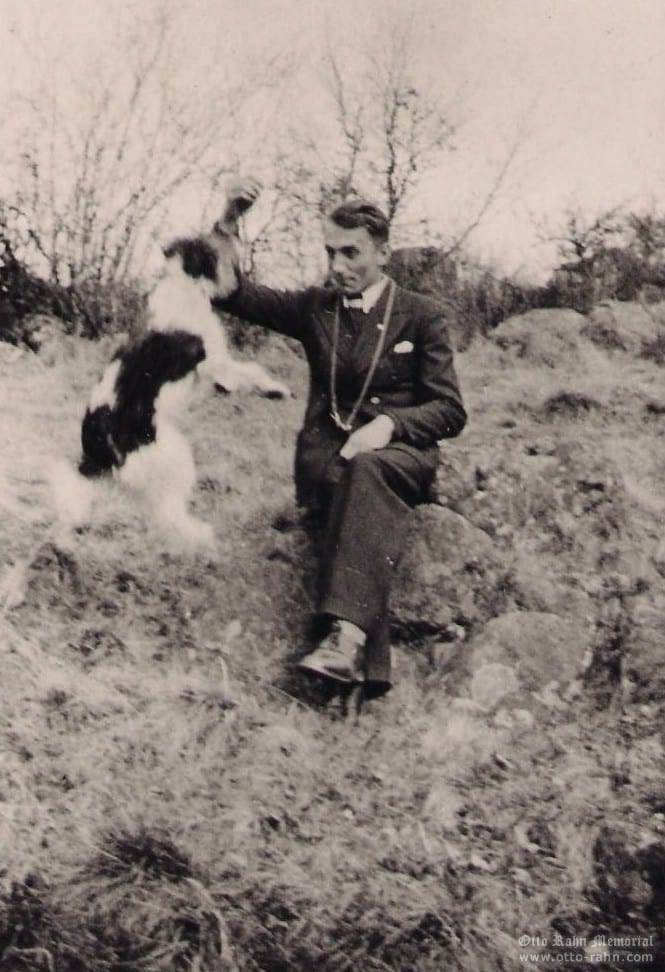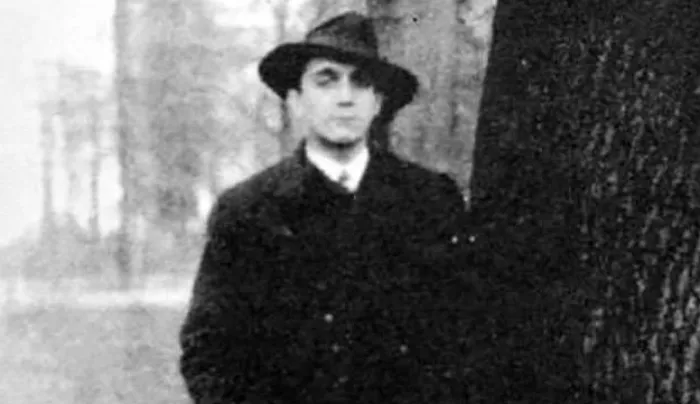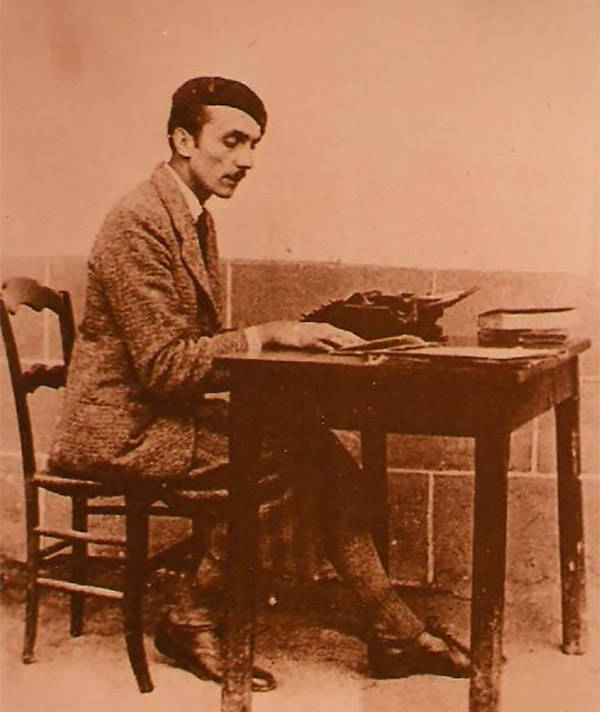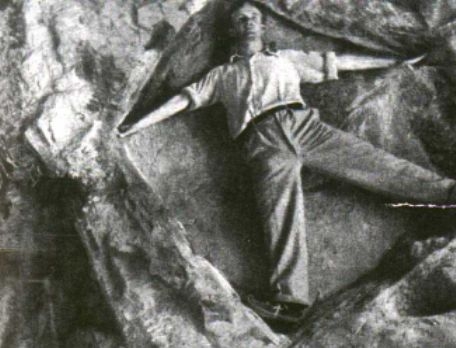In the early days of the Third Reich, Adolf Hitler and his inner circle were obsessed with finding the Holy Grail. They believed the Grail could grant them supernatural powers and help them win the war.
So, they turned to Otto Rahn to help them find it. Rahn was a German archaeologist who studied the Grail legend extensively. He was also a member of the Nazi party, and he was willing to do whatever it took to help his country win the war.

Adolf Hitler Was Obsessed With the Occult
The Nazis’ ideology claimed that they were racially and spiritually superior to everyone else. Furthermore, they believed that the Aryan race was a direct descendant of the ancient Gods and destined to rule the world.
Their theories were based on Nordic mythology, paganism, and occult beliefs. The Third Reich believed that magical artifacts existed and determined to find them, creating a branch of operations tasked with finding them.

Historians or Hollywood didn’t exaggerate the Third Reich’s obsession with supernaturalism; it was authentic; many blockbuster movies like Indiana Jones: Raiders of the Lost Ark and Captain America: The First Avenger depicted this accurately.
Adolf Hitler and Heinrich Himmler were obsessed with finding these lost secrets and devoted a significant amount of time and resources to the search. Hitler recruited Otto Rahn to aid in his quest for the Holy Grail.
Who Was Otto Rahn?
Otto Rahn was born in 1904 in Odenwald, a mountainous region in Germany that was full of historical legends and influences.
While growing up in Odenwald, he believed the stories to be just legends until he learned the truth while studying Philology at the University of Giessen. He developed a deep and complex interest in medieval history and the occult as he learned about other German archaeologists like Heinrich Schliemann.

The latter discovered the ruins of Troy by following clues from the Iliad.
While at University, he also learned about the Cathars, a French Christian sect persecuted and wiped out by the Catholic Church in the 13th century.
The Cathars believed that God was good, and that the material world was evil; the group drew their beliefs from Manichaeism and Christianity.
They also believed in reincarnation and harshly criticized the Catholic church for hypocrisy, greed, debauchery, and heresy.
They also viewed the Church’s wealth and land ownership unfavorably. So naturally, because the Cathars challenged the Catholic church, they were condemned and massacred in the Albigensian Crusade.
These stories significantly affected Rahn and pushed him to research the Cathars and their history further. He studied their lifestyle, customs, and religious beliefs in detail through his work.

Finally, through deductive reasoning, he believed that the Cathars were the true keepers of the Holy Grail and pursued the facts beyond the legends.
In 1931, Rahn traveled to the Montsegur in the Pyrenees to explore the ruins of one of the last Cathar’s strongholds. The legend was that once the Catholic forces captured the stronghold, they burned at least 200 Cathars alive.
However, despite decimating them, it was rumored that four knights of the Cathars escaped by scaling down the walls and leaving with the Grail.
On his visit to the ruins, Rahn discovered hidden tunnels and chambers but no Grail; despite the limited success, he published a book titled Crusade Against the Grail.
Publishing the book earned him the respect and admiration of Heinrich Himmler. Himmler recruited Rahn offering to bankroll his continued research if he published more books.
Rahn agreed, and in his next book, Lucifers Court spoke about the “Prince of Darkness” and how he was misunderstood and that Christianity defamed him.
As His Search For The Grail Continued, Rahn Suffered
After his second book failed to find a popular audience, like the first, Himmler was fascinated by Rahn and his theories and continued to support him by buying his book in bulk and printing it on lavish paper.
Rahn couldn’t see how his research and work were helping the Nazi’s cause, but despite his failure to locate the Grail, Himmler inducted him into the SS in 1936. What should have been a moment of triumph for Rahn was instead a cause for concern.
Rahn continued his research, but as the Nazi’s grip on power tightened, Rahn soon realized that he didn’t fit in with the SS.
As a result, his books received no following and hijacked by the SS as they inserted their agendas and propaganda into his work to use it as a tool for their purposes.
Rahn became increasingly disillusioned with the Nazi regime and its treatment of the German people. He began to see the atrocities they were committing in the name of their cause.
But, unfortunately, the historian was an outsider in the ranks and was looked down upon because he wasn’t a “true Aryan.” His colleagues also disapproved of his homosexuality, but Himmler and Hitler were willing to overlook it if he continued to produce results.
However, the Gestapo often sent homosexuals to concentration camps based on their sexuality. Unfortunately, though Rahn was quiet and reformed, he had a terrible drinking problem that often led to embarrassment to the SS and trists with male partners in public.
So, Rahn’s participation in the Third Reich’s search for power in the Holy Grail could have been for self-preservation despite his interest in the artifact.
Rahn Was Losing His Resolve
Rahn was anti-Nazi, and his political affiliations did not support their agenda. He often talked about the embarrassing behaviors of the SS to his friends.
After repeated failure to produce the Holy Grail during his expeditions and another romantic encounter with another man, Himmler had Rahn transferred to guard duty at the Dachau Concentration Camp as punishment.
Here, Rahn discovered the atrocities the Third Reich was doing and knew he couldn’t continue working with them.
After his three-month duty, he wrote to Himmler in 1939, officially resigning from the SS. While Himmler accepted his resignation, he quickly sent the police to arrest him, leaving the deteriorating historian with little choice on what he could do.
While there is little proof of what happened to Rahn, he expressed his concerns about the Nazi regime to a friend in a letter. He claimed his life was in danger and that a tolerant, liberal man couldn’t live long in Germany, once his beloved homeland.
Rather than suffer at the hands of the SS, Rahn may have taken his own life.
On March 13th, 1939, Otto Rahn’s body was found in the Tyrolean mountains in the snow, where he enjoyed traveling and visiting during his research expeditions into the Cathars.
In his book, Crusade Against the Grail, he wrote about the idea that the Carthar’s beliefs allowed them to take their own lives. It was known as the Endura and was only done in a moment of beauty and kindness, never because of disgust, fear, or pain. It was a simple process of fasting to take their own lives..
Otto Rahn Was an Inspiring And Eccentric Figure
Otto Rahn was a man ahead of his time in many ways. He was an early advocate for environmentalism, believing humans should live in harmony with nature.
His work as a historian was essential to understanding the Cathar people and their culture. Though he didn’t find the Holy Grail, his work was used as propaganda by the Third Reich.
His affairs with other men and drinking problems led to his downfall in the SS, but he worked towards his goals until the end.
Rahn’s story is one of tragedy, discovery, and perseverance in the face of adversity. His natural curiosity and yearning for knowledge and adventure inspired others like him and later earned him the nickname “the Indiana Jones of the SS.”
Some might even say that he was what Steven Spielberg used to create the Indiana Jones character.
Though he was complicated, and many can view his actions as morally grey, Otto Rahn’s story fascinates people today. Perhaps if he had been born in a different time, his contributions would have been appreciated and not used for evil.
As it is, Otto Rahn’s story reminds us of the power of one man’s quest for knowledge and how anyone can use it for good and evil.

